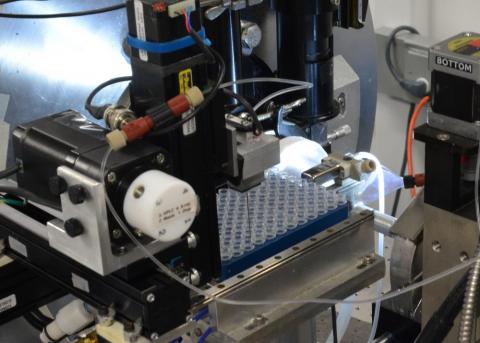What is BioSAXS and why is it important?
Click here to view the poster.

Q. Why is BioSAXS important for us?
disease-causing mutations in proteins. These lead to changes in its structure and/or function. This can lead to its malfunction or overresponse in cells due to the alternation of its property (e.g. affinity of intermolecular interactions). Such structural insights can have significant implications for drug design and development. BioSAXS is a powerful tool for investigating the details of biological macromolecules at up to nearly atomic resolution.
Q. What is X-ray and why does BioSAXS need it?
X-rays are a type of electromagnetic radiation whose wavelength (0.1-10nm) is much smaller than that of visible light (380-
740nm). X-rays are used in the experiment to probe the sample at high (up to atomic) resolution since the theoretical attainable resolution is related to the wavelength of the light used. In particular, BioSAXS requires smaller wavelengths of X-rays (so-called, hard X-rays) not only to obtain high-resolution information but also to minimize radiation damage to the sample. Most biological samples are stable in water. However, higher wavelength X-rays (so-called, soft X-rays) generate radicals in water, causing radiation damage to the sample. The X-ray wavelength used at SSRL BL4-2 is typically 0.1-2.0 nm. As shown in the figures above (see next Q&A for more details about BioSAXS experiments), weaker X-ray scattering signals must be recorded during the BioSAXS experiment. This requires a strong, high quality, and tunable X-ray beam. Synchrotron radiation (of SSRL!) is an ideal X-ray source for BioSAXS experiments.
Q. How is BioSAXS experiment performed?
The figures above are general pictures of the BioSAXS experiment and analysis. The experimental setup, such as X-ray wavelength and sample-to-detector distance, is decided in advance based on the size of your interest (e.g. overall size of the sample or local dimension of interest in or between the sample). In general, the BioSAXS experiment requires a highly purified sample (technically speaking, a monomodal and monodisperse sample). The sample is placed in the sample cell and then exposed to an X-ray beam. Scattered X-rays at small-angle (< 10 degrees) are recorded by the 2D detector and typically a series of images are taken for averaging. Depending on the type of experiment, the same is done on the blank (e.g. water or buffer solution without target molecule) for the background subtraction. Once the scattering curve is obtained from the images, it can be used for further computational analysis (e.g. 3D structure modeling). BioSAXS is particularly powerful when combined with additional information from other biochemical and biophysical experiments such as crystallography.
A variety of state of the art equipment is available.
High-throughput SAXS Autosampler
Fully automated system for BioSAXS data collections and analysis. This is designed for the solution sample. 100 data collections and analyses can be done in 4-5 hours.

SEC-SAXS
SEC-SAXS (Size-Exclusion Chromatography SAXS) is a powerful tool for unstable and difficult sample. The sample can be exposed to X-ray right after the SEC column. The latest HPLC (High-Performance Liquid Chromatography) is employed at BL4-2.

TR-SAXS using SF mixer
TR-SAXS (Time-resolved SAXS) is a unique experiment to pursue the fast changes during the reaction (e.g. conformational changes of the sample in the msec to min time range). The SF (Stopped-flow) mixer is a device that can trigger the reaction by rapid mixing.

